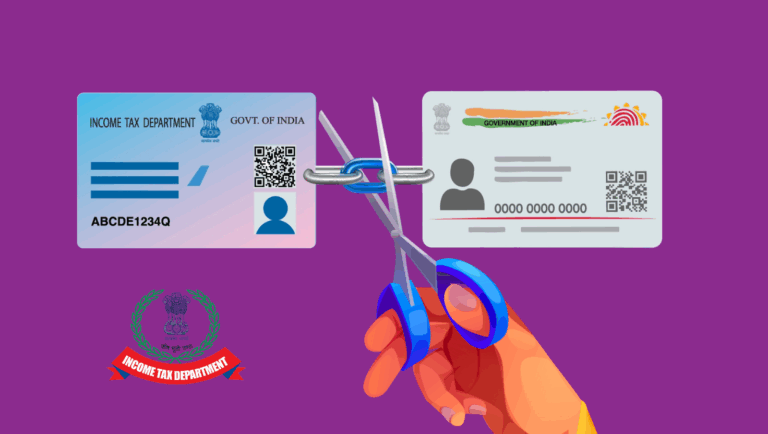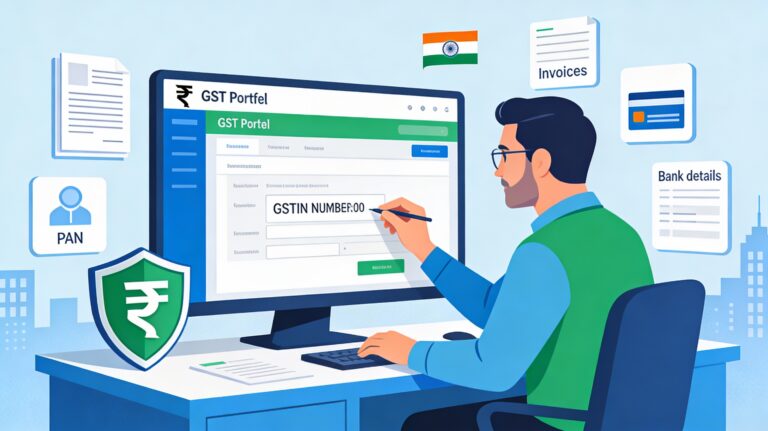
A year-long GST bank account freeze can cripple your business, with ₹1.2 lakh crore in refunds stuck (GSTN, 2025). Dive into this suspenseful guide to unravel Section 83 CGST Act’s maze, leverage 2025’s digital GSTN tools, and file winning appeals. From PMLA overlaps to High Court writs, discover expert hacks to thaw your funds fast. Act now to reclaim your financial lifeline and save your dreams—share this viral roadmap to empower Indian taxpayers!
In 2025, a bank account frozen under GST-related issues for over a year can feel like a permanent financial imprisonment, stunting business growth, severing cash flow, and spiralling stress. For Indian taxpayers and businesses alike, this predicament is often a maze of regulatory blockers, legal hurdles, and procedural delays. However, understanding the latest legal frameworks, remedy pathways, and proactive steps can unlock this fiscal lockup. This guide unfolds the mysteries, revealing clear, actionable solutions backed by the freshest data and legal insights from India in 2025, ensuring your financial lifeline is restored with speed and precision.
Why Does a GST Freeze Happen? Unravelling Section 83 of the CGST Act
The specific GST provision that allows a bank account to be frozen is primarily found under Section 83 of the CGST Act, 2017. According to this section, where the Commissioner believes it is necessary to protect the interest of the government revenue, they may, by a written order, provisionally attach any property, including bank accounts, belonging to the taxable person. This attachment is a security measure to safeguard revenue during proceedings under various chapters of the CGST Act related to assessment, enforcement, or penalty.
Key details from Section 83 and related provisions include:
- The provisional attachment order must be issued in writing, specifying reasons for the attachment.
- The attachment can cover bank accounts to prevent the dissipation of assets during GST dispute or investigation.
- Importantly, Section 83(2) stipulates that such provisional attachment expires after 1 year from the date of the order, meaning a freeze lasting over 1 year should generally cease unless renewed or extended under legal processes.
- The attachment is linked to proceedings initiated under certain chapters of the CGST Act, like Chapter XII (Inspection, Search, Seizure, Arrest), Chapter XIV (Confiscation of goods and conveyances and related penalties), or Chapter XV (Miscellaneous provisions including levy and collection).
- Taxpayers have the right to file objections, seek hearings, and challenge such attachments through appeals or writ petitions in courts if they continue beyond statutory limits or cause undue hardship.
Additionally, freeze may also result from overlapping laws related to GST investigations, such as those under the Prevention of Money Laundering Act (PMLA) or enforcement authorities, but the key GST-specific legal basis remains Section 83 of the CGST Act.
Thus, the GST legal mechanism that authorizes freezing a bank account over GST dues or disputes is carefully regulated under Section 83 CGST Act, supported by detailed procedural safeguards and judicial review options.
If the freeze extends beyond one year, it often involves appeals, extensions, or related proceedings, and taxpayers should actively exercise appeal rights and legal remedies to seek relief.
The Inescapable Reality of Year-Long Freezes: What Happens?
A GST-linked account freeze extending beyond a year is not just exceptional but increasingly reported as delays stagnate due to procedural reviews, appeals, or administrative backlog. Traders and businesses encounter:
- Severely restricted working capital.
- Escalating penalty and interest liabilities for delayed GST payments.
- Legal and financial expenses mounting due to prolonged litigation or compliance costs.
- Damage to creditworthiness and supplier trust.
- Psychological toll of financial insecurity.
This enduring freeze often coincides with delayed GST refunds, an acute pain point for exporters and MSMEs relying on timely capital refunds to stay afloat.
90-hour workweek row: ITC Chairman Sanjiv Puri says ‘would not do it’, bats for flexibility, employee empowerment
When Credit Card Rewards Become Taxable: Key Scenarios to Watch
IndusInd Platinum Aura Edge Credit Card: The Best No-Annual-Fee Credit Card for You?
The Hidden TDS Trap: Why Your Unlinked PAN Could Cost Contractors 20x More in 2025
The Fresh Legal Remedies & Unfreeze Procedures for GST-Linked Bank Account Freezes
India’s legal landscape in 2025 offers both procedural clarity and new digital measures to address bank account freezes under GST, designed to restore fiscal normalcy swiftly.
1. Identify the Freeze Cause Precisely
Pinpoint the official reason for freeze—be it GST dues, legal orders, compliance lapses, or suspicion of fraud. Check notifications from your bank, inquire with your chartered accountant, or use the GST portal’s latest updates.
2. Compliance First: Clear Outstanding GST Dues
Immediate resolution of outstanding dues is critical. In 2025, taxpayers must ensure:
- Filing all pending GST returns accurately.
- Paying all principal GST amounts plus applicable interest promptly.
- Rectifying any mismatch issues in GSTR-1 and GSTR-3B returns to enable refund release and prevent further freezes.
3. Digital Relief through GST Portal & Bank Integration
Many banks now integrate freeze/unfreeze workflows directly with the GST Network (GSTN). Taxpayers can:
- Submit digital representations or clarifications via the GST portal to dispute freeze causes.
- Request provisional discharge or partial unfreezing if urgent operational capital is needed.
- Track appeal statuses in real-time through GST APL-01 form filings, mandated in 2025 to be filed digitally within strict timelines.
4. Initiate Formal GST Appeal Process
If freeze extension is unjustified or prolonged:
- File a formal appeal in Form GST APL-01 within 3 months of the order, complete with detailed justification and documentary evidence.
- The appeal, now mandatorily digital, ensures quicker hearing and decision-making.
- Upload certified orders promptly to ensure your case dates count from the actual appeal filing.
5. Engage Legal Counsel for PMLA or Enforcement Directorate Overlaps
If frozen funds involve PMLA (Prevention of Money Laundering Act) or ED tagging as proceeds of crime, legal remedies are more complex but not insurmountable:
- File objections within 30 days to the PMLA Adjudicating Authority.
- Subsequently, appeal to the PMLA Tribunal within 45 days.
- Courts rarely intervene prematurely without proof of urgency and absence of alternative funds—prepare strong documentation and objective proof.
6. Offline Branch Remedies & Documentation
In case of delays or digital dead ends, approach your bank branch armed with:
- Updated KYC documents—critical for compliance checks.
- Proofs of GST payment and appeal filing.
- Court order copies if applicable.
- Clear letter from your CA or legal advisor outlining the reasons for unfreezing and compliance status.
Banks typically require these before manual unfreezing occurs, with timelines ranging from a few days to two weeks.
Suspense Unfolded: The Most Overlooked Yet Effective Tips to Expedite Unfreezing
The narrative twist is that beyond formalities, success often hinges on:
- Proactive Monitoring: Regularly track GST refund status, bank alerts, and communication from tax authorities to preempt freeze triggers.
- Strategic Partial Payments: Sometimes negotiating partial GST payment or deposits convinces authorities to lift partial freeze, allowing operational funds release.
- Expert Representation: Early engagement of tax legal experts reduces errors in appeals and boosts approval odds by navigating complex GST adjudication processes efficiently.
- Leveraging CPGRAMS Portal: Filing grievances on Centralized Public Grievance Redressal and Monitoring System (CPGRAMS) can escalate stalled GST refund or freeze cases.
Preventive Measures: The Indian Business Owner’s Arsenal Against Future Freezes
No one wants a repeat freeze. Adopt these habits to guard against future disruptions:
- Maintain updated and digitized KYC profiles linked with bank and GST registrations.
- Harmonize all tax filings and payments monthly to prevent mismatches.
- Conduct periodic account audits to spot suspicious activity early.
- Avoid over-reliance on credit or delayed payments that could trigger bank or tax intervention.
- Establish a direct line with your bank’s relationship or compliance officer for timely freeze alerts and mitigation.
How to Challenge a Prolonged GST Freeze through the GST Adjudicating Authority
To challenge a prolonged GST bank account freeze through the GST adjudicating authority, follow these steps based on the 2025 legal procedures in India:
- File a Formal Appeal under Section 107 CGST Act
- The taxpayer must file an appeal against the attachment or demand order that caused the freeze.
- This appeal is filed in Form GST APL-01 on the GST portal within 3 months from the date of communication of the freeze/order.
- The appeal should include detailed grounds explaining why the freeze is unjustified or causing undue hardship.
- Supporting documents such as proof of GST compliance, payment receipts, and representation letters must be uploaded digitally.
- Pre-deposit Requirement and Stay of Proceedings
- Under Section 107(6) of the CGST Act, typically a pre-deposit of 10% of the disputed tax amount plus interest and penalty is required to file the appeal.
- Once the pre-deposit is made and appeal is filed, enforcement proceedings including the bank account freeze are generally stayed automatically.
- Courts have directed that the bank accounts must be unfrozen once this condition is met.
- Regular Follow-Up and Hearing
- Monitor the appeal status on the GST portal regularly after filing.
- Attend any hearing scheduled by the GST adjudicating authority or appellate authority.
- Provide additional evidence or clarifications promptly if required.
- Representation and Requests for Partial Unfreezing
- A petition or representation can be submitted accompanying the appeal requesting partial unfreezing of accounts for operational expenses, with documented reasons.
- This can sometimes expedite relief before the final order.
- Legal Recourse if Delay Persists
- If the adjudicating authority delays decision or relief is not provided, a Writ Petition can be filed in High Court on grounds of undue hardship and violation of natural justice.
- The courts often examine proof of urgency, cooperation with authorities, and existence of alternative funds before ordering de-freeze.
- Practical Notes
- Timely submission of appeals and compliance substantially increases chances of unfreezing.
- Engage a legal/tax professional to prepare a comprehensive appeal and monitor proceedings.
- Keep all GST filings and payments transparently updated to avoid rejection.
Emotional Resonance: The Human Toll and Hope Beyond Frozen Funds
Behind every frozen bank account lies an entrepreneur’s dreams, a family’s livelihood, and employees awaiting salaries. The emotional strain can cripple morale, leading to burnout or business closure. Yet, the evolving legal ecosystems and digital governance in India in 2025 inspire hope—systematic processes and timely interventions often restore financial flow, reinforce trust, and revive dreams.
Final Thought: Act Fast, Act Right to Thaw Your GST Bank Freeze
A bank account frozen under GST for over a year is daunting but not doom. With the right mix of precision in compliance, digital savvy in appeal filing, and timely legal action, the financial freeze can be dismantled. This demands vigilance, patience, and expert advisory. Embrace technology, know your rights under the 2025 GST laws, and engage early with regulatory and banking authorities. The future is unfreezing your funds, restoring your business vitality, and moving forward stronger than ever.
































